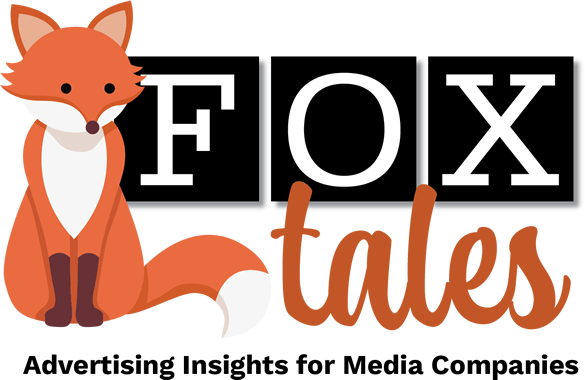 By Tony Silber
By Tony Silber
I saw this report earlier this month from the International News Media Association predicting advertising trends over the next three years. Naturally, I wanted to read about these trends and share them with you, the Fox Tales audience.
Some undoubtedly will impact you. Maybe all of them.
The report, published on October 11, was written by Mark Challinor, the INMA’s advertising lead. He focuses on five major developments. In this dynamic market, Challinor says, “Media businesses (and their advertisers) that don’t plan for change and [instead] choose to stay with outdated advertising techniques will remain stagnant and will, by default, allow competitors to overtake them.”
So what are the trends? Here’s Challinor’s list.
1. AI first
Only now, he says, are we beginning to realize the true potential of machine learning and artificial intelligence. In particular, it’s revolutionizing the space through its potential to offer sales teams and marketers real-time insights. On a more practical level, through automation, it’s allowing salespeople to be freed up for creating proposals and building relationships. Proposals and pricing decisions can be made by AI, Challinor says.
AI is also a natural fit for customer service. “The AI-first approach to advertising will include using smarter chatbots simulating conversations with customers, over time becoming regularly used in both the offline and online environments,” Challinor says.
And finally, AI will be used to help track engagement and sales with substantially improved analytics.
2. The rise of voice
Voice advertising, Challinor says, is expected to become more important. Voice-based technology creates opportunities for more contextually relevant and even personalized ad interactions. Think of the common consumer devices already out there, such as Alexa, Siri, Google Assist, and more. AI will enhance innovation and engagement with those platforms. Advertisers can recommend and then sell products and services in the comfort of consumer homes.
3. Enhanced reality
Technologies like augmented and virtual reality will either be game-changers or duds. No one has really cracked the code yet, and widespread consumer adoption hasn’t happened. (Google Glass qualifies as a dud, at least so far. Maybe Apple’s Vision Pro will find success.) “By 2026, I expect more creative use of these powerful technologies and they will become a more important part of our lives without our even realizing it,” Challinor writes. “Just look at the investment being make by the big tech giants.”
4. User-generated content
“There is so much more power and persuasiveness when an advertising brand not only talks itself up, but mixes in existing customers endorsing and explaining their own personal experiences with that brand,” says Challinor. “I believe UGC will become a more integral part of advertising strategy over the next two or three years.”
Maybe it will come in the form of new products and services amplified with emerging/encouraged favorable customer reviews on landing pages. Word of mouth on social-media platforms is already helping marketers’ sales. Companies using user content will become even more popular and more powerful, he suggests.
5. Social channels
Is social media advertising increasing in value or has it plateaued? There’s a burnout trend where people are backing off social media in favor of the real world. But social media, Challinor says, will see an increase in brand promotions. Advertising is all about locating prospects where they’re gathering. “I see a future where social-media channels include interactive, voice-controlled ads that consumers can control with a click, or even with their own voices. Advertising will have enhanced reach and credibility because customers will be doing the work of raising awareness.”
Summary
The future of advertising will be in proving the value of these new ways to creatively interact and engage customers. “We see a rise in the use of the likes of chatbots, voice interaction, social channels, and alternative reality techniques over the next few years,” Challinor says.
New advertising trends also will allow an increased “customer-based” approach. “In many ways,” he concludes, “the future is already here—just expect an increased focus and more budget allocated to the above five points.”
Predictions, my fellow advertising professionals, can provide insights or they can be so far off as to be useless. Or they can be an uninspired collection of obvious techniques and trends. Time will tell.
